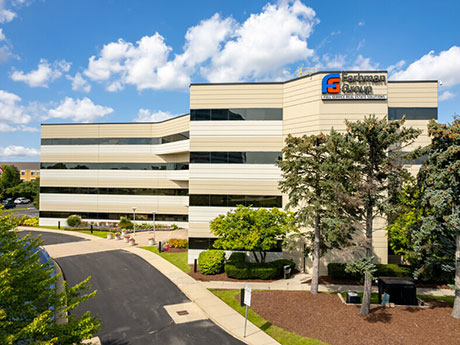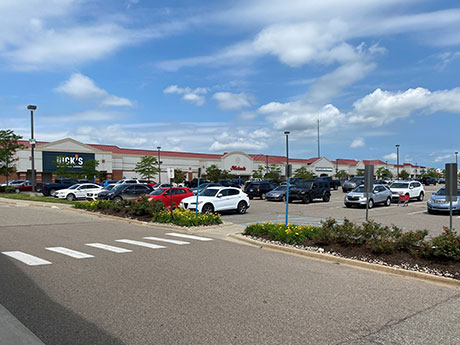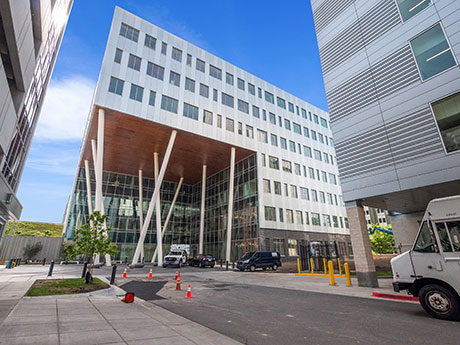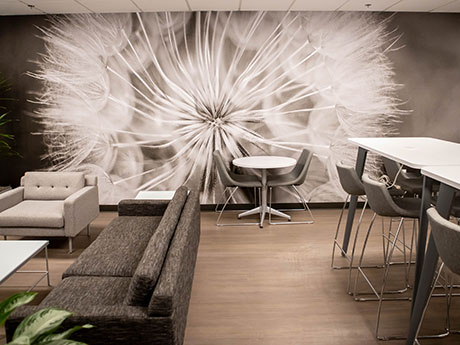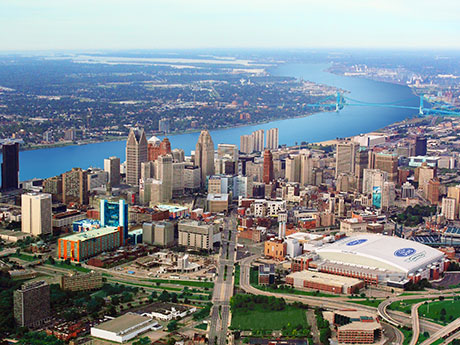By Andy Gutman, Farbman Group It’s no secret that the last few years have been a turbulent time for the office market nationally. While Detroit has fared somewhat better than some other cities across the Midwest, the same pandemic (and now post-pandemic) pressures have led to a higher-than-usual degree of uncertainty and volatility. Here in the early part of 2023, it’s a good time to take a step back and look at how the Detroit office landscape is changing, how it’s not changing and what might be in store throughout the rest of the year — and beyond. This is a unique time because there’s still a tremendous amount of uncertainty to factor into the commercial real estate market in general, and into office specifically. There are a lot of brands and businesses who either have not made up their mind about their office structure and needs going forward, or are still in an experimental post-pandemic period where they are trying to figure out the balance that works for them in terms of remote or hybrid work options and brick-and-mortar configurations. Until more of that uncertainty is resolved, a clear picture of the medium- and long-term prospects for the office …
Michigan
By Evan Lyons, Encore Real Estate Investment Services Looking back on 2022, it could be said that Detroit’s economic performance last year mirrored that of the city’s tenacious Detroit Lions’ football season. Both were mired in doubt, plagued by volatility and sustained by grit, yet beyond all expectation, when the clock ran down, both proved the naysayers wrong. Just as the Lions surprised doubters by finishing their season at 9-8 and beating their divisional rivals, the Green Bay Packers, Detroit surpassed expectations by outpacing the national jobs growth rate of 5.8 percent at mid-year 2022 with a rate of 8.6 percent year-over-year. Gains in employment and wages are expected to continue over the next few years, according to a University of Michigan study. The city bolstered its “offensive line” with new store openings and new construction throughout the urban core. Stadiums and parks were filled again, fueled by crowd-pleasing events and programing, including Belle Isle parks’ notorious, over-waxed giant slide, which went viral and gained infamy last year for catapulting riders who dared venture a ride. Detroit also scored points in visits to leisure and hospitality establishments during the past 12 months. Visits increased by 50 percent from June …
By Jeff Karger, JLL There’s no doubt that the office market today is much different than what it was five years ago. Employers across the nation have had to adjust their work models, time and time again, to meet the needs of their employees — and those in Grand Rapids are no exception. As landlords, employers and employees adapt to these changes, it’s important to understand the direction of the office market. Below, check out five factors that are defining it. 1. A flight to quality Like many other cities across the nation, Grand Rapids is experiencing a resounding flight to quality. Employers are seeking Class A and trophy spaces to appeal to their employees and offer them an experience, rather than just a cubicle to work in. Some of these office features can include free fitness centers, onsite cafés, coffee shops and restaurants, outdoor terraces and more. Plus, according to JLL research, 59 percent of employees expect to work at a company that supports their health and well-being. Interestingly enough, employees prioritize this over salary — a key reason why companies and landlords alike are investing in amenitized spaces with up-to-date HVAC systems, exercise classes and healthy food options. …
By Andy Gutman, Farbman Group This is a complicated and even confusing time for anyone trying to make sense of the commercial real estate market. Conflicting economic indicators and pervasive concerns about inflation — and even the potential for a recession — create a somewhat cloudy outlook, even as promising opportunities remain in some markets. In the Midwest, there are noticeable market-specific differences that give a sense of just how much variability there is across the region. Taking a closer look at the commercial real estate in a city like Detroit — where the commercial real estate investment activity remains high — and comparing it with other Midwest markets in terms of retail activity, receivership rates, commercial real estate taxes, crime rates and urban revitalization efforts, can start to give us a better sense of how and why some Midwest markets are currently viewed as more favorable than others. It can also give us a feel for what investors and commercial real estate decision-makers are likely to be evaluating when they look at how to spend their dollars in the months and years ahead. Detroit looking good What is it about Detroit that makes it an appealing commercial real estate …
By Ryan Nierman, Ph.D. and Bradley Meloche, Colliers The tumultuous events of the last two years have brought uncertainty into many aspects of Detroit’s office market. Even as companies emphasize their eagerness to return to the office, many questions remain regarding space designs, required square footage and buildout requirements. Tenant selectivity With increasing vacancy rates and negative net absorption throughout the metro Detroit office market, real estate experts are witnessing tenants becoming more selective in property occupancy. The result has been a slowing demand for Class B and C office product. Tenants have begun targeting Class A assets with improved visibility, signage, modernized color schemes, numerous amenities and flexible floorplan designs. As the need for larger office footprints goes down in reaction to post-COVID considerations, tenants have become willing to pay increased per-square-foot rents, for at or below preexisting rental budgets, due to decreased size requirements. The need for tenants to target Class A facilities has been compounded by the so-called “Great Resignation,” as employees are willing to demand more from their employers. As a result, employers know that a failure to invest in a more modern and amenitized workspace may result in poor employee retention and future talent recruitment. …
By Anthony Avendt, Cushman & Wakefield Like most markets in the U.S. and Canada, Detroit’s industrial sector has seen its ups and downs. Detroit’s always been a bit of an outlier though due to extreme volatility. What’s more, we’ve (hopefully) learned lessons from past downturns that well position the city and its commercial real estate regardless of continued strong demand and rent growth or any bumps in the road we may encounter. Detroit is a little different from similar-sized markets in the region. First, while it’s certainly part of the U.S. heartland, the city’s geographic position on a peninsula means it’s poorly suited for broad distribution to large swaths of the country. Second, of course, is the auto industry’s impact. The auto industry is widely dispersed across the U.S. now, but Detroit and Michigan remain its heart and brain. As the sector pivots to autonomous and electric vehicles, that is going to drive demand for industrial space. Ford already has announced an investment of $40 to $50 billion over the next decade-plus, including redevelopment of Michigan Central Station as anchor of its Mobility Innovation District. Stellantis, the parent of Chrysler, Jeep and Dodge, has announced its own $35.5 billion investment …
The “retail apocalypse” predicated on the pandemic never really materialized. Instead, we’ve seen retail do what it always does: evolve. Much as the rest of the country, metro Detroit’s retail real estate market has evolved and come back in a big way. Tenants on the move As vaccines were adopted and the economy allowed to reopen, the economic rubber band snapped back quickly and stronger than many of us could have predicted. Retailers were dusting off pre-pandemic expansion plans and back to signing leases in 2021. We saw new openings and new market searches from BJ’s Wholesale Club, Burlington, Carvana, Chick-fil-A, Chipotle, Starbucks, Crunch Fitness, Edge Fitness, Gabe’s, iFly, Jollibee, Meijer, Portillo’s, Ross, Shake Shack, Smoothie King, T.J. Maxx, Total Wine & More and Tropical Smoothie Café. 2021 also presented a big void in the Michigan furniture market following the bankruptcy of Art Van (which controlled 30 to 35 percent of the market). Numerous players including Gardner White Furniture, Ashley Furniture and Value City Furniture all quickly snapped up this real estate, immediately increasing their market share. Other categories that continue to seek space include car washes (which has to be one of the most active categories out there …
A lot has changed in the world since the beginning days of the COVID-19 pandemic in early 2020. Fast forward to November 2021 and the world is a very different place. Over 46 million people have been infected in the United States alone with over 750,000 deaths officially attributed to the virus. Most businesses have been forced to shut down in-person work for some period of time and many have instituted remote work programs until the beginning of 2022. The real question on everyone’s mind is when will we return to normal and more specifically, what will the new normal look like? Although we will most certainly have to deal with the aftereffects of COVID-19 and any variants that surface, there is light at the end of the tunnel. To date, approximately 427 million doses of the vaccine have been administered with over 192 million people fully vaccinated. Recently, Pfizer announced that it has developed an easy-to-administer COVID-19 pill, which when used in combination with a widely used HIV drug, can cut the risk of hospitalizations or death by 89 percent in high-risk adults who have been exposed to the virus. Given the combination of vaccinations, natural immunity for those …
By Anthony Pellegrino III, P.A. Commercial Detroit is the industrial, transnational logistics and auto powerhouse of the Midwest. Detroit has continued year after year to grow and transform its industrial sector in three prominent geographical locations. Each of these locations is anchored by auto innovation, creating a stable market for suppliers and transport: 1. The Mount Elliot Employment District: This is the home of General Motors’ $2.2 billion investment into its existing Hamtramck Assembly. GM is renaming it “GM Factory Zero” to represent its full dedication to electric vehicle production. 2. Southeast Detroit: Fiat Chrysler’s $2.5 billion expansion to Jefferson North includes a new 1.4 million-square-foot Mack Avenue Engine Complex. This is part of a total $4.5 billion earmarked for Michigan plants. 3. Southwest Corktown: Ford is conducting an ongoing investment of $1.45 billion into its autonomous vehicle campus in an area called Corktown. The multi-building transformation is near Detroit’s international bridge and tunnel. Each area contains various tax incentivized Opportunity Zones, New Market Tax Credits and qualified HUB Zones. According to Costar Group MLS, Greater Detroit has a healthy 4.6 percent vacancy rate while Detroit proper has a 9.45 percent vacancy rate for industrial buildings. Much of the 9.45 …
By Jason Krug, Berkadia Sunbelt states are top of mind for multifamily investors these days, as COVID-19 has accelerated the trend of renters leaving major cities in search of more space and a better cost of living. Of course, the allure of sunshine and warm weather is hard to compete with, but cities across the Midwest are also seeing a spike in interest from renters and investors and chief among them is Detroit. There has been overwhelming interest in multifamily opportunities in and around the city, as investors looking for yield move beyond core and core-plus markets in search of real value deals, which Detroit has aplenty. So, what’s driving this interest, and why should more investors be paying attention to Detroit? There are a few key reasons. Solid fundamentals Limited supply of new units being delivered across the state will continue to drive organic rent growth. As is the case across the country, there is a shortage of housing throughout Detroit and the metro area. Although Detroit’s population growth is smaller compared to the South and Southeast, the region has a fraction of the units coming out of the ground as the South and Southeast, paving the way for …
Newer Posts


